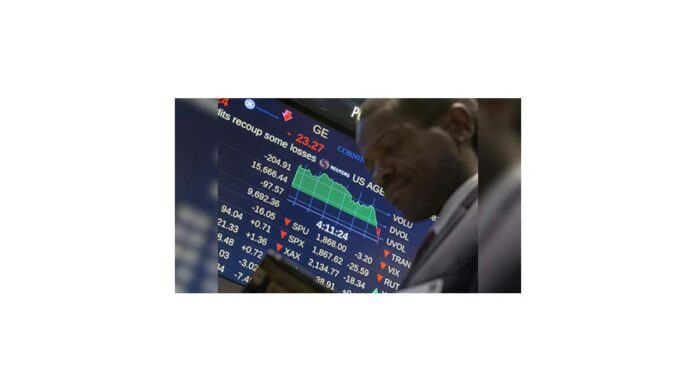Introduction
Markets stumbled on Monday, July 7, 2025. The Dow Jones Industrial Average slid 0.9%, ending at around 44,406 after falling more than 400 points on tariff headlines apnews.com. Investors reacted sharply to new U.S. tariffs and rising global uncertainty. Meanwhile, a splashy move by Elon Musk triggered further volatility, pulling tech stocks downward thetimes.co.uk. In response, traders turned cautious, sending yields higher and bonds tumbling.
1. Tariff drama resurfaces
On July 7, President Trump announced a revival of reciprocal tariffs. Starting August 1, levies of 25–40% would apply to imports from Japan, South Korea, South Africa, Malaysia, Laos, Myanmar, and more businessinsider.comabcnews.go.com+4investopedia.com+4wsj.com+4. Additionally, a potential 10% penalty could hit BRICS-aligned nations nypost.com+14theguardian.com+14abcnews.go.com+14.
- Impact on markets
- The Dow fell by roughly 422 points (0.9%) on July 7 nypost.com+15apnews.com+15abcnews.go.com+15.
- S&P 500 and Nasdaq gave back 0.8–0.9% as well marketwatch.com.
- Futures took a hit Sunday evening ahead of the announcement, dropping ~0.3–0.4% marketwatch.com.
- Drivers behind the move
- The so-called “reciprocal tariffs” were paused in April for 90 days. Now, the pause has ended due to unmet trade deal targets investopedia.com+1abcnews.go.com+1.
- Treasury Secretary Scott Bessent said that trade deals with other nations—including the UK, Vietnam, and China—were progressing en.wikipedia.org+4investopedia.com+4businessinsider.com+4.
As markets brace for more tariffs, risk-off sentiment has returned. Dollar strength and emerging market pain followed apnews.com+2businessinsider.com+2timesofindia.indiatimes.com+2.
2. Tech tumble & Musk shock
Monday’s sell-off was led by tech and automotive stocks. Tesla dropped ~7%, dragging the Nasdaq and fueling Dow losses businessinsider.com+1bloomberg.com+1.
- Why Tesla slide matters
Elon Musk announced plans to launch a new third political party. That shifted focus away from Tesla’s core business and toward political risk bloomberg.com+3investopedia.com+3apnews.com+3.
The announcement knocked Tesla shares to their lowest in a month finance.yahoo.com+15investopedia.com+15thetimes.co.uk+15. - Broader tech hit
Other megacaps also pulled back. Markets had surged in recent weeks on hopes of Fed rate cuts and strong earnings. But now, growing trade and policy uncertainty has dampened sentiment bloomberg.com.
3. Sector breakdown
Looking deeper:
- Dow components
Morning trades showed modest losses, largely driven by Sherwin‑Williams and Chevron, each dragging the Dow by ~38 points marketwatch.com. - Broader indices
- Russell 2000 (small caps) fell 1.5%, outperforming in losses apnews.com.
- Sectors from tech to energy to consumer goods all turned red by midday .
- Bond market & yields
U.S. Treasuries dropped as yields rose, driven by declining risk appetite and fears of stunted growth .
4. Macro backdrop
To paint the full macro picture:
- Jobs outlook
A strong June jobs report showed 147,000 new jobs, stronger than expected. The unemployment rate fell to 4.1%, reducing chances of a July Fed rate cut nypost.com. - Oil & commodities
OPEC+ announced a production increase of 548,000 barrels/day for August. This sent crude prices lower and weighed on market sentiment marketwatch.com.
These trends push rate cut hopes further out. As a result, stocks face headwinds even amid low inflation and solid earnings .
5. Dividends & corporate strategy
Despite market jitters, dividend growth persists. S&P Dow Jones Indices reported that Q2 net indicated dividends rose by $7.4 billion, although growth slowed compared to earlier quarters press.spglobal.com.
- What it means
Net dividend growth declined from $15.3 billion in Q1 to $7.4 billion in Q2 .
Cuts are also fewer, suggesting companies are cautious but committed press.spglobal.com. - Looking ahead
S&P expects dividend growth to reaccelerate in H2 2025—especially if trade conditions stabilize. Big banks, buoyed by favorable Fed tests, could lead the gains press.spglobal.com.
6. Historical scope
Recall that April’s “Liberation Day” tariffs triggered a 3% Dow drop—around 1,344 points—and erased over $3 trillion in market value by early April barrons.com+4en.wikipedia.org+4en.wikipedia.org+4.
But after the April 9 tariff pause, markets rebounded. By late June, both the S&P and Nasdaq had set record highs en.wikipedia.org. Now, July’s renewed policy tensions have once again shaken investor confidence.
7. What lies ahead
Looking forward, investors are watching:
- August 1 tariff rollout: Markets will track which countries face new duties and whether more deals emerge.
- Trade negotiations: Bessent suggests deals with the EU, UK, China, and BRICS allies are in process apnews.comthetimes.co.uk+5theguardian.com+5businessinsider.com+5.
- Fed policy path: Strong employment and inflation data could push rate cuts to Q4 or later nypost.com.
- Earnings season: Corporate guidance may highlight resilience or fresh vulnerabilities due to trade.
8. Investor takeaway
In short:
- Markets face short‑term headwinds. Tariffs, tech volatility, and bond yields are a mix that encourages caution.
- Yet fundamentals aren’t broken. Dividends are steady, employment is strong, and earnings are solid.
- Volatility likely stays high. We are in a wait‑and‑see phase: trade deals, earnings, and Fed clarity will steer the next move.
This isn’t a full‑blown crash scenario. Rather, it’s a volatile period of adjustment. Smart investors might hold, trim risks, or seek out quality dividend plays.
Conclusion
The Dow’s 400‑point drop on July 7 is a sharp reminder of how fast markets react to global policy. Still, historical patterns show that uncertainty can give way to recovery once clarity arrives.
That said, July and early August look jittery. Watch tariffs, trade talks, earnings, and Fed communications closely.
In the near term, expect choppy sessions. But keep perspective: stock markets are still grounded in strong economic roots. For now, proceed with caution. Let fundamentals—not headlines—drive your investment stance.









